Fishing is a popular pastime many enjoy, whether for sport or food. When preserving fish quality, keeping them at a consistent temperature is essential. This is where the use of ice comes in handy, but did you know that many fishermen sprinkle salt on their ice? This might seem like an odd practice at first, but there’s a scientific reason behind it.
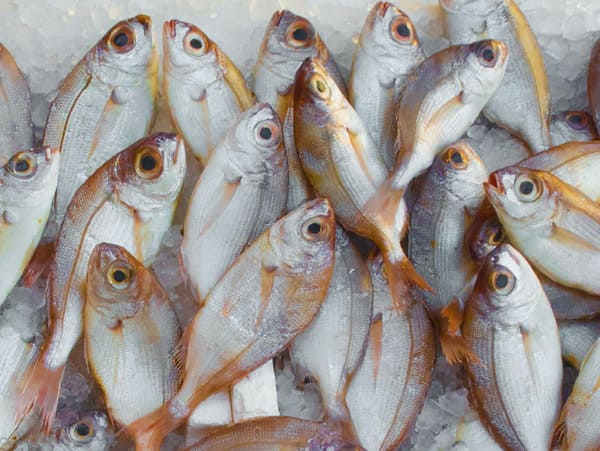
Well, the science behind it lies in the fact that salt lowers the freezing point of water. This creates a brine solution on the surface of the ice. The brine solution helps to maintain a consistent temperature in the cooler or fish box. This, in turn, helps to keep the fish fresh for a longer period.
In this article, we’ll dive deeper into why fishermen sprinkle salt on ice, its benefits, and how it’s done. We’ll also look at some precautions when using salt on ice. This is to ensure the fish’s and the environment’s safety. Keep reading to learn more about this age-old technique.
Understanding the Chemical Properties of Salt

Salt is a naturally-occurring mineral compound composed of sodium and chloride. It is often used in cooking and food preservation, but it also has a range of other uses, including melting ice. The chemical properties of salt make it great for de-icing roads during the winter months.
One of salt’s most important chemical properties is its hygroscopic nature. This nature allows it to attract and hold moisture. When you sprinkle salt on the ice, it draws moisture from the surrounding air. It then forms a brine solution on the surface of the ice.
The brine solution has a lower freezing point than pure water. So it remains liquid even below freezing. This allows the salt to penetrate the ice and break it down, making removing it easier.
Types of Salt Used for Sprinkling on Ice
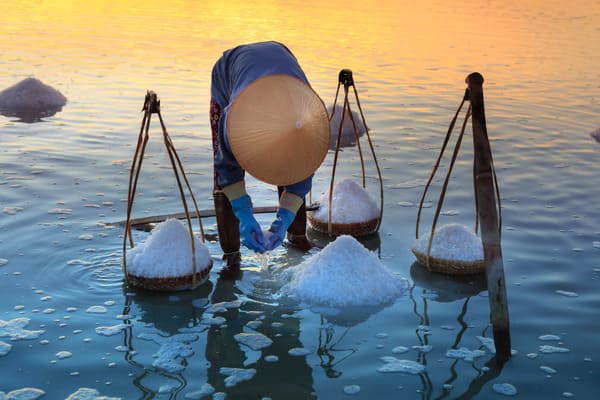
Here are some types of salt that are often used for sprinkling on ice:
- Table Salt: Table salt is one of the most common salts for ice sprinkling. It is available and inexpensive. But, it can be more difficult to dissolve than other types of salt.
- Rock Salt: Rock salt, also known as halite, is often extracted from salt mines. It is usually used for de-icing roads during the winter months. Rock salt is a larger crystal than table salt and takes longer to dissolve. It is not recommended to use on fish you consume as it can leave a gritty texture.
- Sea Salt: Sea salt is often made by evaporating seawater. It is a more natural form of salt and contains trace minerals. Sea salt has a larger crystal and can add a nice texture to fish, but it can be more expensive than other types of salt.
- Kosher Salt: Kosher salt is often a coarse-grained salt used in kosher cooking. It is a popular choice for sprinkling on ice. This is because of its large crystals and fast-dissolving ability. Kosher salt is also less likely to contain additives than table salt.
How Salt Changes the Freezing Point of Water

Pure water freezes at 0 degrees Celsius (32 degrees Fahrenheit). But when you add salt to the water, it lowers the freezing point of the water.
The salt ions disrupt the crystal lattice structure of the water molecules. It makes it even more difficult for them to form ice. The amount of salt needed to lower the freezing point of water varies. It depends on the temperature and the concentration of the salt solution.
For example, in an ice experiment, they tested different salt solutions. A 10% salt solution freezes at -6 degrees Celsius (21 degrees Fahrenheit). A 23.3% salt solution freezes at -21 degrees Celsius (-6 degrees Fahrenheit). This means that the more salt added to the water, the lower its freezing point.
But it’s important to note that there is a limit to how much salt you can add before it becomes ineffective. The salt will become saturated and stop lowering the melting point of the water.
The Effects of Salt on Ice
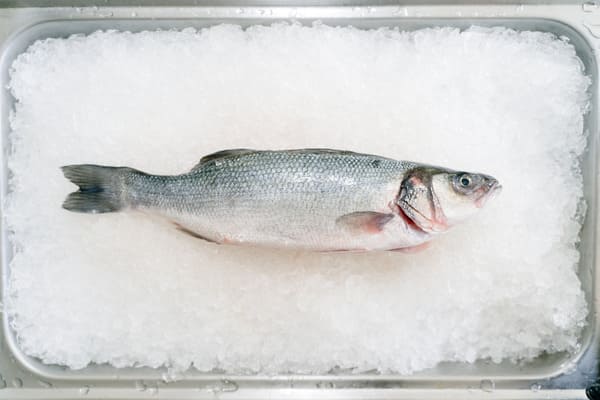
There was a fishing-for-ice science experiment where salt was often sprinkled on ice. It created a brine solution that melts the ice and lowers its freezing point. This had several effects on the ice, including:
- Faster melting: The brine solution accelerates the melting process of the ice. This means you can remove it faster.
- Reduction of ice buildup: The salt prevents it from building up by melting the ice cube. This buildup becomes a hazard on roads, sidewalks, and other surfaces.
- Increased safety: Salt reduces ice buildup and prevents slip-and-fall accidents on icy surfaces. This makes them safer for pedestrians and vehicles.
- Preservation of fish and bait: When you sprinkle salt on ice, it lowers the ice temperature. It creates a layer of brine that helps to keep fish and bait fresh. The brine solution remains colder than the surrounding ice. This is essential for preserving the quality of the fish and bait.
- Longer-lasting ice: The brine solution created by the salt melts the ice. It creates a layer of water that acts as an insulator. This helps keep the ice, fish, and bait on top of it colder for longer.
Different Methods of Applying Salt on Ice
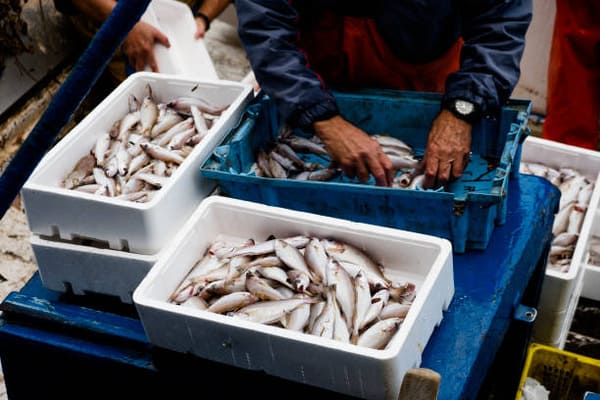
Fishermen use various methods of applying salt on ice to preserve the quality of their catch. The different methods include:
1. Sprinkling Salt on the Ice
This method involves spreading a thin layer of salt over the ice. It helps create a barrier that slows down the melting process. The salt works by lowering the freezing point of water, which prevents the ice from melting fast. Keeping the ice intact for a long time keeps the fish fresh and cool.
2. Dissolving Salt in Water and Pouring It Over the Ice
This method creates a slushy brine solution that covers the fish, keeping them cool and fresh. Fishermen often use this method when transporting their catch in a cooler or fish box. The brine solution helps maintain a consistent temperature. It prevents the fish from becoming too warm or cold.
3. Layering Ice and Salt to Create a Brine Solution
This method involves placing a layer of ice in a container. You then add a layer of salt and repeat the process until the container is full. As the ice melts, it creates a brine solution that covers the fish, preserving their freshness. This method is beneficial when you must keep your catch fresh for an extended period.
Why Do Fishermen Sprinkle Salt on Ice? Benefits of Salt on Ice

1. Keeping Fish and Bait Fresh
One of the primary reasons why fishermen sprinkle salt on ice is to keep their catch fresh. As mentioned earlier, salt lowers the temperature of the ice by creating a brine solution. This solution boasts a lower freezing point than pure water.
This helps to keep the fish and bait on top of the ice at a lower temperature. This, in turn, slows down the decomposition process and prolongs their freshness.
2. Maintaining Low-Temperature
Aside from keeping fish fresh, sprinkling salt on ice also maintains low temperatures. When the salt dissolves and forms a brine solution, it stays colder than the surrounding ice. This is true even when the temperature rises a bit.
This is important for fishermen who need to store their catch on the ice for an extended period. It ensures that the fish and bait are at a safe temperature to prevent spoilage.
3. Preventing Slippery Ice Surface
Fishing on a slippery surface can be dangerous, leading to accidents and injuries. Applying salt to the ice lowers the water’s freezing point. It causes it to melt, creating a slushy surface for better traction for fishermen.
Besides these reasons, there are other benefits to using salt on ice. For example, salt is an affordable material that you can get from most stores. It also has a long shelf life; you can store it without spoiling it. This makes it a convenient option for fishermen who must stock up on fishing trip supplies.
Environmental Impacts of Adding Salt to Ice
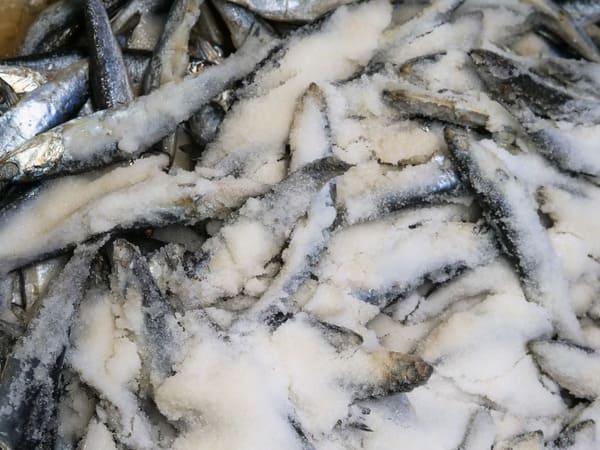
1. Effects on Water Bodies
While salt can be effective for fishermen, it can have negative environmental impacts. Adding salt to ice cubes can run off into nearby water bodies and increase the salinity of the water. This can harm aquatic plants and animals. It can alter their natural habitats and disrupt the balance of the ecosystem.
2. Effects on Wildlife
Salt can also harm wildlife that relies on water bodies for survival. Birds and other animals that feed on fish are often affected by the increased salinity of the water. This can affect the availability and quality of their food sources. Also, excess salt can harm amphibians and other species sensitive to water changes.
Precautions When Using Salt on Ice
When using salt on ice, you should take a few essential precautions to ensure the safety of the fish. Here are some crucial precautions to keep in mind:
- Use salt in moderation: While salt is effective for keeping fish fresh on ice cubes, too much salt can harm the fish. It is important to use salt in moderation and not apply excessive salt to the ice. A general guideline is to use one pound of salt for every ten pounds of ice.
- Proper saltwater disposal: To prevent environmental damage, dispose of the water with care. Pouring saltwater on the ground or in a waterway can harm plants and aquatic life. Disposing of saltwater in a sink, toilet, or other drainage system is best.
- Avoid contact with skin and eyes: Salt can irritate the skin and eyes. So, you need to avoid direct contact with salt. If salt comes into contact with your skin or eyes, rinse with water.
- Store salt well: You should store the salt in a dry, cool place away from moisture and direct sunlight. Moisture can cause the salt to clump and lose its effectiveness.
Conclusion
A salt is a crucial tool for fishermen to keep their catch fresh and maintain a low temperature on the ice. Its chemical properties enable it to lower the freezing point of water. This prevents the ice from melting fast. By creating a layer of brine solution, salt can keep fish and bait colder for longer.
But salt on ice can also have negative environmental impacts. Salt runoff can enter nearby water bodies and harm aquatic life. Excessive use of salt can also damage vegetation and soil. Fishermen need to be aware of these potential impacts and take steps to reduce them.


